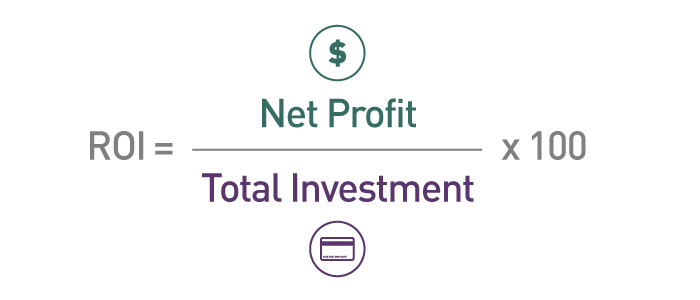
The question invariably comes up (as it should) in business development meetings or as we ramp up with new clients. “How can you prove return on investment?” “How will we know this is working?” “When will we see some gains from this?”
While any good businessperson should ask these questions, the answers are usually not simple. The connection between resources spent and revenue earned can get murky with marketing. There are often overlapping campaigns, different media tools, delayed results, and other influences that make it challenging to isolate a marketing program or campaign in order to measure ROI.
However, there are some basic actions you can take to get closer to understanding your Return on Investment. More importantly, there are things you can learn in the process — about what to do next, how to improve, and when you’ve achieved success (however that may be defined).
In simplest terms, the formula for ROI = (Net Profit / Total Investment) * 100 (ROI is typically shown as a ratio).

Start with strategy
Of course, every legitimate marketing project will begin with strategy. In the ROI world, strategy must include measurable factors. You can’t determine ROI without having a benchmark to measure against. And those B2B benchmarks range greatly. Your goal could be to:
- Generate X leads to fill the sales pipeline
- Increase awareness among a core group of prospects by X%
- Produce $X in revenue from contacts generated by your campaign
- Reduce employee turnover by X%
- Increase customer satisfaction by X%
- Grow web traffic by X% and engage X new users
- Generate X click throughs and gather X prospect requests
- Land X new client contracts with average fees of $X
Make sure there’s a dollar figure associated with any factor you plan to measure (every new lead is worth an average of $X). Establish a timeframe in which to measure results, and determine the beginning benchmark measurement, before proceeding. And remember to calculate customer lifetime value (CLV), as the acquisition of a new customer will likely lead to more than one purchase.
In the ROI world, strategy must include measurable factors.
Calculate cost
The cost to execute your campaign includes any incremental fees or hard costs expended specifically for your marketing project:
- Agency fees (from strategy through coordination)
- Media fees (from placement costs to pay-per-click spend)
- Creative costs (writing, design, editing, coding, etc.)
- Production expenses (printing, photography, illustration, etc.)
What’s not included? Your internal marketing team costs. Overhead. Fixed costs which have no bearing on a specific project or campaign.
Determine results
Revisiting your initial strategy and benchmark measurement, gather data that answers your strategic focus question (How many new leads were generated? How was employee retention affected? What was the impact on web traffic?). Calculate the total dollar figure associated with each result. And then plug your profit and investment numbers into the ROI equation above. Fair warning: You’ll likely be collecting data over a significant period of time to prove ROI.
Corporate communications, like this project for HNTB, are hard to gauge, but they raise awareness and promote business expertise. When it’s time to select a firm for a project, this type of communication increases the likelihood of participation in the proposal process.
Show and tell
Rather than presenting a series of charts that map out raw data, focus on those actionable takeaways we mentioned earlier. Of course, you’ll need to include your ROI results. But follow them up with key findings, as well as recommendations for improving ROI in the future. Build on what you’ve begun. Repurpose your marketing efforts across different platforms, from social media to print reports. Used correctly, ROI is a vital marketing metric and a valuable tool for focusing long term strategic efforts.
What does a successful marketing campaign mean for you? We’d love to hear about your goals and objectives. Let’s discuss over a cup of coffee. We’d be happy to share our initial thoughts and let you know how we can help. Call or email us today.
